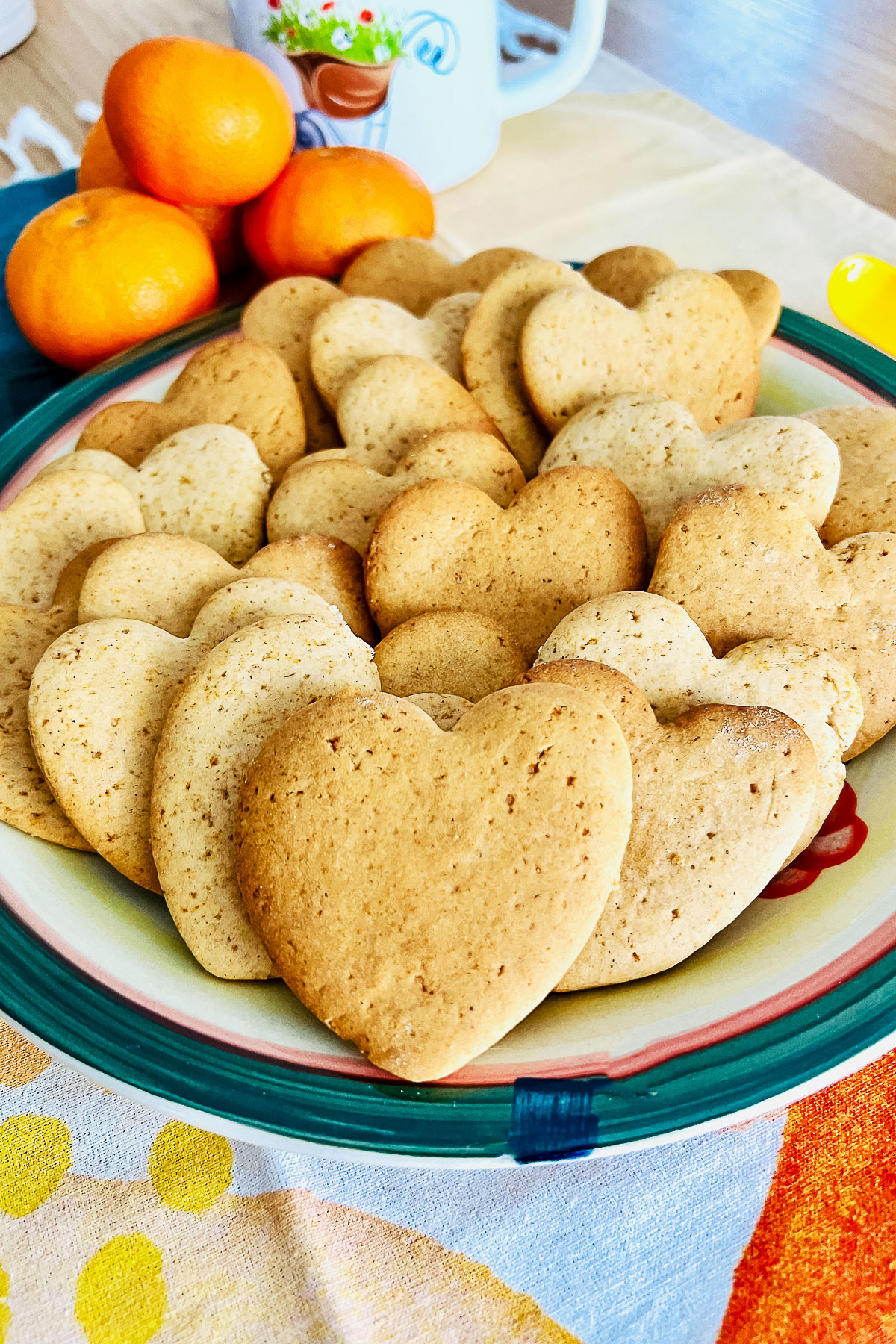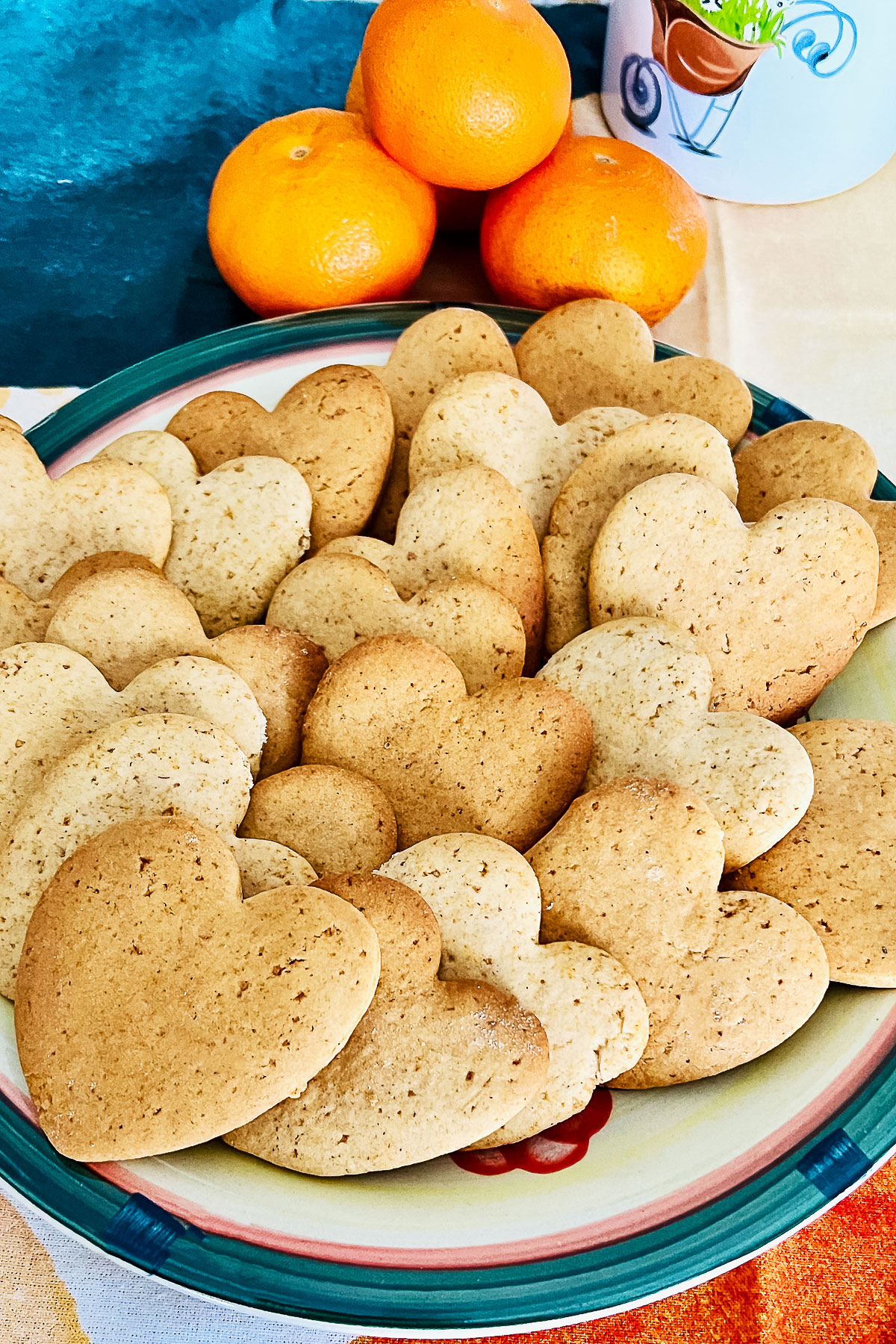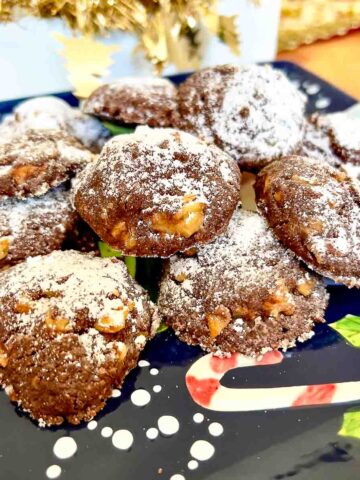Buttermilk Honey Cookies are a unique and delicious treat that combines the sweetness of honey with the tangy flavor of buttermilk.
These soft and chewy cookies are golden brown and filled with hints of cinnamon, nutmeg, and cloves.

This buttermilk honey cookie is an excellent recipe from The Cookie Book, a 1936 collection of cookie recipes by Nellie Watts. The book includes a variety of cookie recipes, as well as information on basic baking techniques and tips for successful cookie-making.
It also contains advice on using basic pantry staples to make various cookie recipes, reflecting the economic constraints of the Great Depression era. Cookies are generally easy to make and have the advantage of keeping for a much longer time than most other types of baked goods.
Properly stored, some cookies will keep for several months, especially those containing fruit, honey, or molasses or those with a dry, crisp texture.

Jump to:
What Are Buttermilk Cookies
Buttermilk cookies are a type of cookie that is made with buttermilk as one of the main ingredients. Buttermilk is a slightly acidic liquid that gives the cookies a subtle tangy flavor and helps to create a tender, moist crumb.
These cookies are typically soft and cakey in texture rather than crispy or crunchy, and they can be found under different names: Sour milk cookies, tea cakes, and Amish sugar cookies.
The texture of these cookies is soft and tender, with a slight crunch on the outside. They are perfect for a sweet snack or a dessert that is both satisfying and comforting. Enjoy them with a glass of milk or a cup of tea for a perfect end to a meal. Also, buttermilk honey cookies are rolled cookies.
Ingredients Needed
(For a complete list of ingredients and instructions, please scroll to the bottom of the article to get a printable recipe card)

- Unsalted butter: Unsalted butter is best for making cookies. It has a sweet, slightly nutty taste and a firm texture. It also has to be room temperature.
- Granulated sugar: This is the most common type of sugar in the US. If you are out of the US and want to make these cookies, caster sugar is the most frequently used sugar in cookie-making, as it has a finer grain and is ideal for creaming with butter.
- Honey: Honey adds flavor and moisture and acts as a binding and also browning ingredient in the recipe. Honey also retains moisture in baked goods, so the cookies will be softer and tender, with a chewy texture.
- Eggs: Large eggs are the standard for baking in the US. They should also be at room temperature.
- Buttermilk: Buttermilk is slightly acidic and helps activate the raising agent, in our case, the baking soda.
- All-purpose flour: Most cookie recipes use plain (all-purpose) flour as it has a low gluten content, resulting in a crumbly texture.
- Baking soda: We already discussed the importance of baking soda in this recipe. It is usually used together with an acidic liquid, like buttermilk. Make sure you use baking soda and not baking powder, as they are quite different.
- Spices: We use ground cinnamon, ground nutmeg, and ground cloves.
- Salt: Salt brings out the flavor in sweet baked goods, so please do not skip it.
Expert Tip
If you forget to take the butter out of the refrigerator in advance, soften it in the microwave for 10-15 seconds, but keep an eye on it, as butter can go from cold to melted in just a few seconds.
There are more smart ways to soften the butter, and you can find them all here.
How To Make These Cookies
Step 1. Cream the butter with sugar.
Step 2. Add honey. Combine honey with the creamed mixture.
Step 3. Beat egg and buttermilk together. Pour the mixture over the butter and keep mixing.
Step 4. Sift dry ingredients in a large bowl. Mix flour, baking soda, salt, and spices together and add them slowly to the wet ingredients. Combine to obtain a smooth dough.

Step 5. Chill the dough. Wrap the dough in foil or cover the bowl with it and chill for at least 30 minutes. You will be amazed at how nice this dough will become after being in the fridge for some time.

Step 6. Preheat the oven and line a cookie tray with parchment paper.
Step 7. Shape the cookies. Roll dough about ¼ inch thick on a lightly floured surface using a rolling pin. Cut cookies about 2 ½ inches in diameter. I used a heart-shaped cookie cutter. Place them on the cookie tray.

Note about baking trays: Choose good quality baking sheets. The heavier ones are better, as they won't buckle in high temperatures, distort the shape of the cookies, or develop hot spots, which might cause burning.
Avoid baking sheets that are very dark as they absorb more heat, which means cookies burn more easily. Dark baking sheets are intended for other kinds of baking, such as bread-baking.
Step 8. Bake the cookies. They should be baked for 10-12 minutes at a time. Because of the honey and spices, these cookies will be slightly darker when they come out of the oven. Remove the cookies from the tray and cool them on a wire rack.

How to store
These cookies must be kept sealed in an airtight container. To restore the texture of the cookies in case they get hard, add a slice of brown bread to the container. Replace the bread daily (Grandma's advice).
Baked cookies can be frozen successfully. They should be packed into an airtight container with waxed paper between layers. To thaw, leave the cookies at room temperature for about 30 minutes.

Faqs
Cause: It could be too much liquid or fat or too little flour. Maybe the dough has become too warm.
Remedy: Always measure ingredients carefully. Chill the dough for 30 minutes before baking. If it is still too soft, work in a little extra flour.
The oven was too hot, or the cookies were baked for too long.
Cause: Baking too low down in the oven or at too low a temperature might be one problem. The baking sheet may be poor quality, or you may have used salted butter for greasing.
Remedy: Check the oven temperature and bake the cookies on the middle shelf. Avoid thin or very dark baking sheets.
No, as this dough contains baking soda that reacts with the buttermilk. The chemical reaction between them produces carbon dioxide bubbles that make the cookie rise during baking. Cookie dough containing raising agents must, therefore, be shaped and baked as soon as possible.
Conclusion: This old recipe will be a keeper in my books. The dough was easy to work with, and the cookies were absolutely delicious. This is a humble, simple recipe that everyone will enjoy.

Happy baking!
More rolled cookie recipes
More recipes to love
- Tasty Sweet and Savory Buttermilk Recipes
- 44 Christmas Cookies & Bars From Around The World
- Lemon Cream Cheese Cookies
- Easy Oatmeal Peanut Butter Cookies
📖 Recipe

Buttermilk Honey Cookies Recipe
Equipment
Ingredients
- ⅔ cup unsalted butter at room temperature
- ½ cup granulated sugar
- 1 cup honey
- 1 large egg
- ½ cup buttermilk
- 5 cups all-purpose flour
- 1 teaspoon baking soda
- ½ teaspoon ground cinnamon
- ½ teaspoon ground nutmeg
- ½ teaspoon ground cloves
- ½ teaspoon salt
Instructions
- Cream butter and sugar together in a large bowl. Use a hand mixer or a whisk.
- Add honey and blend.
- Beat egg and add it to the buttermilk. Pour the mixture over the butter.
- In a different bowl, sift together the dry ingredients: flour, baking soda, cinnamon, nutmeg, cloves, and salt. Combine with the wet ingredients to obtain a smooth dough.
- Wrap it in foil and chill for at least 30 minutes.
- Preheat oven to 350F. Line a cookie tray with parchment paper.
- Roll the dough about ¼ inch thick and cut cookies about 2 ½ inch diameter.
- Bake at 350F for about 10-12 minutes. It makes four dozen cookies.





Comments
No Comments